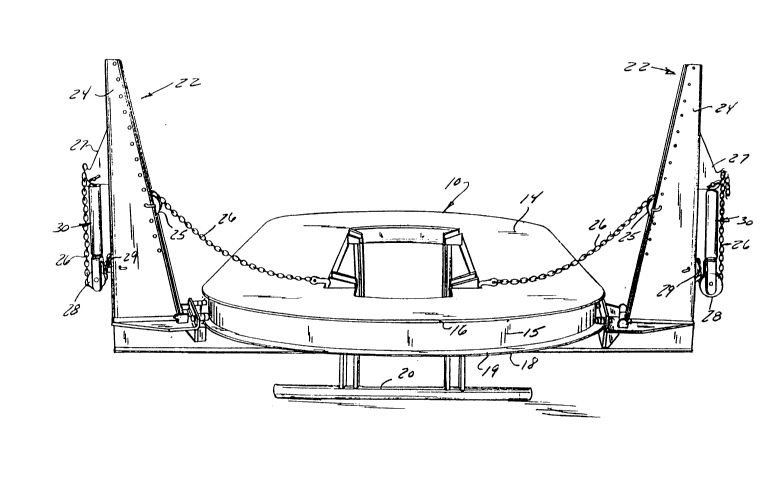Note: Claims are shown in the official language in which they were submitted.
-7-
The embodiments of the invention in which an
exclusive property or privilege is claimed are defined as
follows:
1. In an apparatus for repairing and
straightening vehicles including a rack having upper
and lower tracks, a plurality of pull towers
mounted on said lower tracks for movement around the
rack, each pull tower including a tension member
having a free end for attachment to the damaged area
of the vehicle, the improvement comprising an
auxiliary tower mounted on said upper track in close
proximity to one of the pull towers whereby said
tension member can be attached to said vehicle with
said free end of said tension member attached to
said auxiliary tower whereby a tensile force applied
to the chain will be doubled at the point of
connection of the chain to the damaged vehicle.
2. The auxiliary tower according to claim 1
wherein said auxiliary tower includes a tower assembly
and a cap plate assembly, said cap plate assembly being
mounted on the upper track, said tower assembly includes
a base plate, a horizontal member mounted on said base
plate and extending inwardly on the rack, a vertical
member secured to said base plate at the outer end of
said horizontal member and a gusset member positioned
between said horizontal member and said vertical member
whereby said vertical member is prevented from movement
with respect to said horizontal member on application of
a pull force on the tension member.
3. The auxiliary tower according to claim 2
wherein said cap plate assembly includes a cap plate, a
pair of spacer bars mounted on said cap plate for
-8-
separating said tower assembly from said cap plate a
distance equal to the thickness of said upper track.
4. The apparatus according to claim 3
including a clamp mounted on each end of said cap plate
for securing said cap plate assembly to said upper track.
5. The apparatus according to claim 4
including means on said vertical member for supporting
said tension member at predetermined heights.
6. An anchor force assembly arranged to be
mounted on a rack or floor in a spaced relation to a
pull tower for doubling the force applied to a
vehicle to be repaired, said assembly comprising a
base plate assembly including a base plate, a pair
of lugs mounted on each end of said base plate and a
pair of spacer blocks mounted on said plate, and a
tower assembly pivotally mounted on said base plate
assembly, said tower assembly including a plate
pivotally secured to said plate assembly, a tubular
vertical member mounted on said plate and a tubular
gusset mounted between said tubular member and said
plate.
7. The combination with one or more pull
towers mounted around the perimeter of a damaged
vehicle, each pull tower including a chain having a
free end for attachment to the damaged area of a
vehicle, of one or more auxiliary towers for
repairing damaged vehicles, each of said auxiliary
towers comprising:
a tower assembly including a base plate,
a horizontal member mounted on said base plate
and extending inwardly toward the vehicle,
-9-
a vertical member secured to said plate at the
outer end of said horizontal member,
a gusset member positioned between said
horizontal member and said vertical member, and
means for supporting said tower assembly for
pivotal movement with respect to the damaged
vehicle.
8. The combination according to claim 7
including an auxiliary plate mounted in a spaced relation
to the floor, said supporting means comprising a cap
plate assembly including a pair of clamps for engaging
said auxiliary plate.
